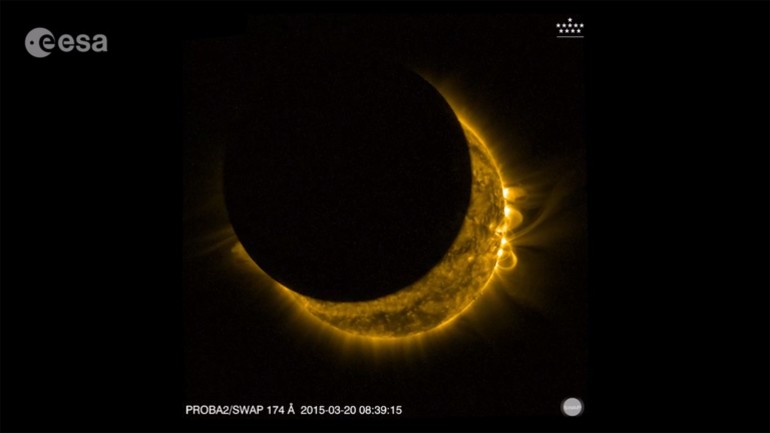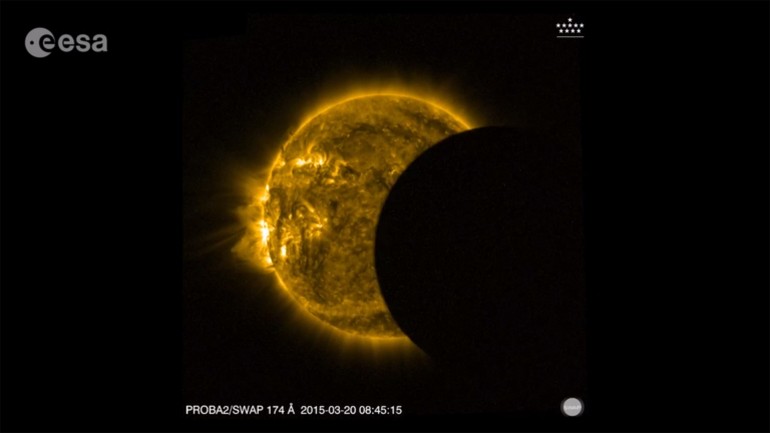Stellar viewing: The solar eclipse in pictures
By Anthony Wood
March 23, 2015

Proba-2 captured this image at the height of its second encounter with Friday morning's solar eclipse (Image: ESA)
Friday morning bore witness to a stunning solar eclipse, as our Moon traversed the face of our parent star, blocking its light in a beautiful example of the intricate orbits negotiated by the planets and moons that make up our solar system. For those able to secure a pair of protective glasses and be charmed enough to gaze through cloud-free skies, the sight was a spectacular one – a rare meeting of two celestial bodies that have accompanied each of us through every day and night of our lives.




Even when direct viewing was made impossible thanks to either a woefully short supply of glasses or a frankly spiteful weather system, hope was not lost. The event was streamed live online via the robotic observatory service Slooh, who carried a webcast of the event from Norweigan Svalbard – a little archipelago far enough North to lie in the zone of totality, and thus see the Moon fully eclipse the Sun.
As the celestial ballet unfolded, ESA minisatellites Proba-2 and Proba-V documented the event from space, capturing images of the eclipse itself, and the resultant shadow cast onto the Earth's surface. This rare view from space was shared by astronauts aboard the ISS, who tweeted some of their favorite snaps of the occasion.
The next total solar eclipse is due to take place in March 2016, however the zone of totality will rarely touch the land, making it a challenging prospect for astronomy enthusiasts hoping to directly view the event. An easier time will be had of it in August 2017, when the zone of totality will run the length of the American mainland.
A replay of the Slooh webcast can be found online.
Source: ESA